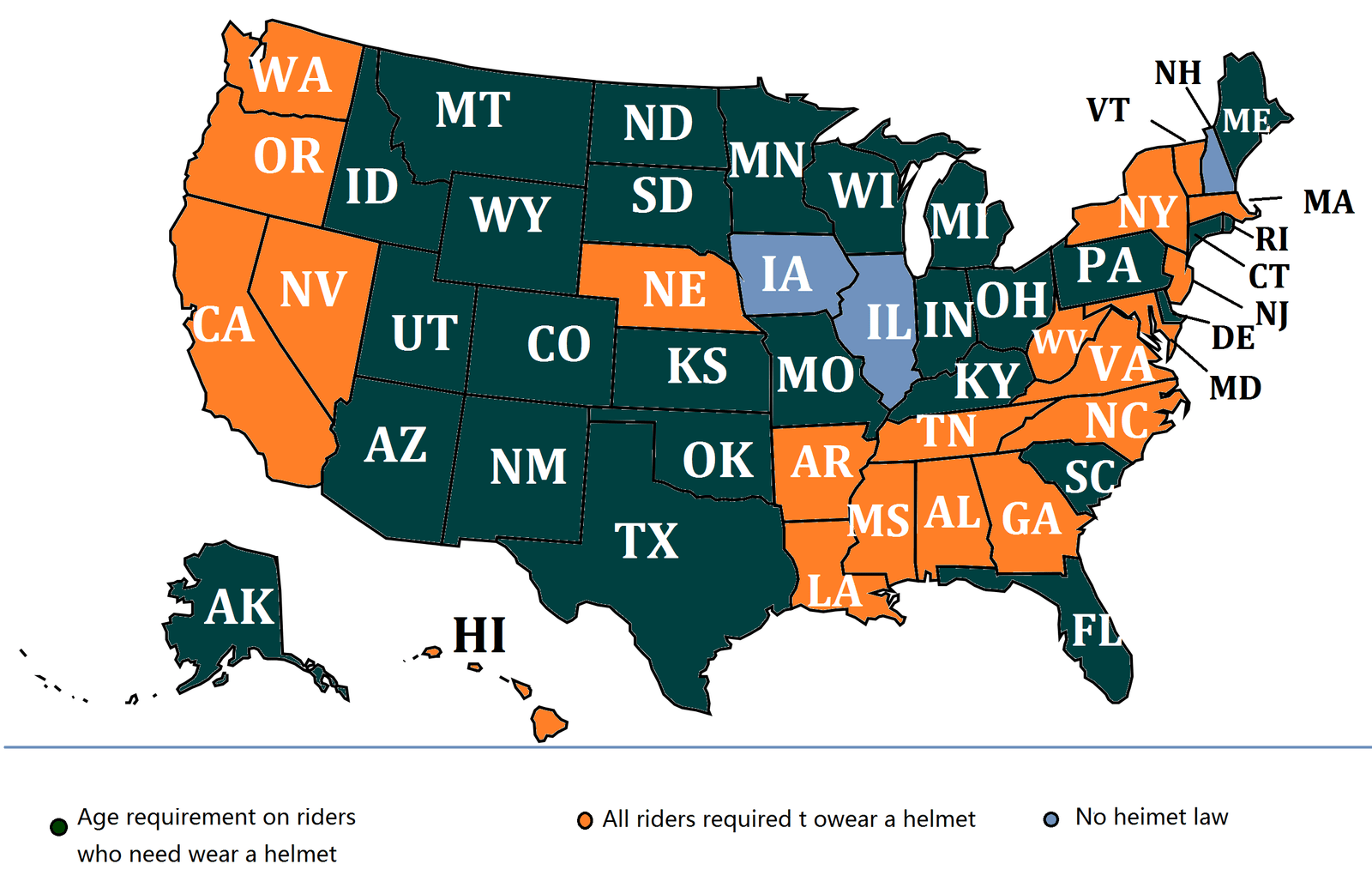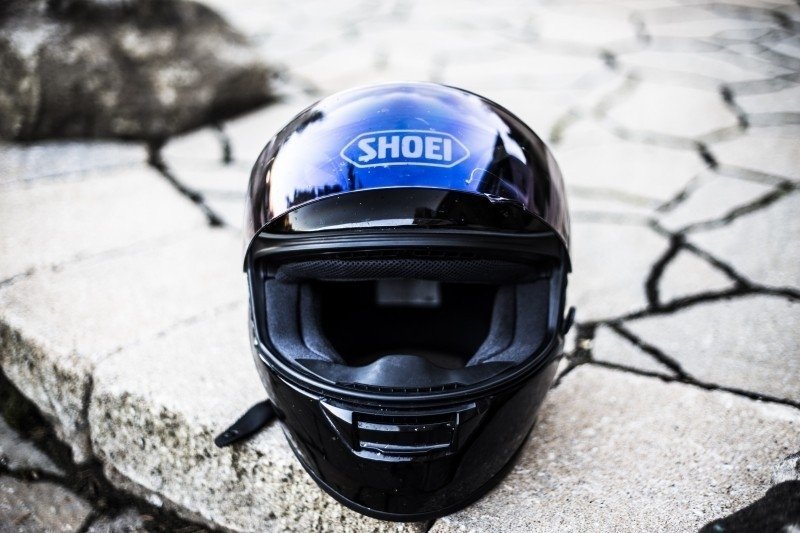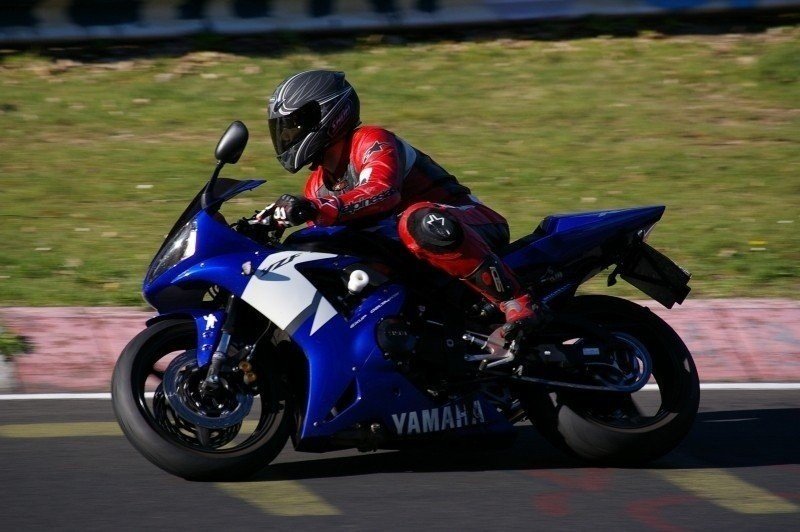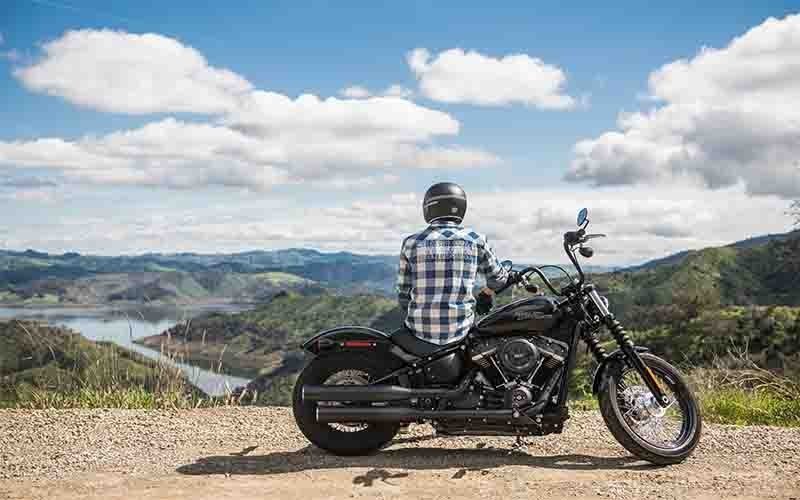Motorcycle safety relies on mirrors for riders to keep tabs on what's going on around them. Yet, not every mirror cuts it the same way. Riders have long been bickering over which is better: bar end mirrors or the stock mirrors. They argue about which (Bar End Mirrors vs Stock Mirrors) gives a better view, […]

Understanding U.S. Motorcycle Helmet Laws By State (All You Want To Know Is Here).
In most states, you are not lawfully needed to wear a helmet when you ride a motorbike. However just because you can go helmet-free does not imply you should.
Let's make something clear: Riding with a helmet is constantly a clever call, also just for a brief journey to the food store. We think every motorcyclist understands which of those checklists they prefer to get on.
That stated, there are still many riders who select to go without a helmet, especially for brief runs in town.
For these riders, it is necessary to know whether they can legitimately ride without a helmet or not. And also even if you do constantly use a helmet, it works to know the laws in your state about whether you need to use one-- or whether it's simply a truly, actually excellent suggestion.

Table of Contents
Kinds of motorcycle Laws
When it comes to motorcycle helmet laws, the United States is divided into the following three categories:
- Countries that require cyclists and passengers of all ages to wear helmets
- States that require helmets for certain types of cyclists and travelers (for example, individuals under the age of 18), but make them an option for adult motorcyclists
- States where all cyclists and travelers can choose a helmet
Most states fall into the first two categories. Nineteen states and Washington, DC have enacted global helmet laws, and 28 states have selected helmets as designated motorcyclists. Only three states Illinois, Iowa, and New Hampshire do not have anyone’s helmet laws.
Alabama Motorcycle Helmet Laws
Alabama calls for vehicle drivers as well as guests to put on a protective helmet.
The law has really detailed needs for this helmet like that the helmet must have a difficult exterior covering of non-shatterable material that resists effect, as well as penetration as well as, have actually a firmly protected shock absorptive cradle for the head that is made to support the helmet and also preserve separation in between the head and outer covering.
The extra padding of the helmet must be impact-resistant, absorbing, and also of considerable thickness in all locations where the head is in close distance with or may get in touch with the outer covering. The helmet must be made of durable products that will certainly not undertake significant change as the helmet ages. Products that are known to cause skin irritability or condition are not to be used.
Additionally, the helmet should have a completely attached adjustable chin strap that holds it safely in place. The law needs all chauffeurs and also guests to have the chin band secured while the bike is in inactivity. The helmet does not need to have a visor, however, if it does, the visor needs to be versatile or of the snap-on kind, and it can not be more than one-quarter inch above the surface area or exterior covering.
Alaska Motorcycle Helmet Laws
Motorcycle motorists 18 years or older aren't required to put on a helmet in Alaska as long as they have a bike certificate. Nevertheless, if they only have their training authorization, a helmet is required, regardless of their age. Helmets are additionally required for all passengers.
Everyone is required to wear eye security unless the bike has a windshield or windshield.
Arizona Motorcycle Helmet Laws
Motorcycle drivers and passengers under 18 must use helmets in Arizona. Regardless of age, all riders need to wear eye defense such as goggles or riding glasses.
Arkansas Motorcycle Helmet Laws
Arkansas requires bike chauffeurs and guests under 21 to wear a helmet. Nevertheless, that does not put on three-wheel bikes geared up with a cab and also a windscreen which do not go beyond twenty horsepower (20 hp) when such motorbikes are utilized by metropolitan cops departments.
All drivers and also guests, of whatever age, need to wear safety glasses, goggles, or clear face shields.
California Motorcycle Helmet Laws
In California, every person who drives or rides on a motorbike has to wear a helmet. All helmets must meet the U.S. Division of Transportation and also state security requirements and be attached to the helmet bands.
Colorado Motorcycle Helmet Laws
Colorado only needs motorists as well as passengers under 18 to put on helmets. Helmets should satisfy or surpass the requirements developed by the USA Department of Transport (DOT) for bike helmets and the chip strap should be worn any time the motorcycle remains in movement.
All drivers and guests are called to use safety eyeglasses with lenses made of safety glass or plastic. These eye defense gadgets are not called for if the operator/passenger is putting on a helmet with eye security.
Connecticut Motorcycle Helmet Laws
Connecticut just passed a law elevating its limit age for bike helmets. Reliable October 1, 2019, Connecticut motorbike drivers and guests under 21 have to wear helmets or encounter a penalty of as much as $90, however, it's still a helmet-optional state for cyclists and guests over 21.

Delaware Bike Helmet Laws
In Delaware, everybody under 19 needs to put on a helmet and eye security authorized by the secretary of state. Those 19 and also older need to a minimum of have a helmet and eye protection in their possession when riding.
Florida Motorcycle Helmet Laws
Florida's helmet law is a little bit complicated. In general, it requires all motorbike drivers as well as bikers to put on helmets. However, if anyone 21 or older is covered by an insurance plan providing at least $10,000 in clinical advantages for motorbike-related injuries, the helmet legislation plan does not apply.
All motorbike chauffeurs and bikers, regardless of age, are needed to put on eye protection. Anybody that trips in a confined sidecar is not subject to Florida's helmet or eye defense legislation.
Georgia Motorbike Helmet Laws
Under Georgia legislation, all motorcycle drivers, as well as travelers, need to put on a helmet. Eye defense is additionally called for if the motorbike is not geared up with a windshield.
Hawaii Motorbike Helmet Laws
In Hawaii, motorists and guests under age 18 are needed to put on a helmet securely secured with a chin strap. Everyone is required to put on shatterproof glass or goggles if the bike is not geared up with a windshield.
Idaho Helmet Laws
In Idaho, motorists, as well as guests under 18, should put on a helmet equal or far better than the requirements established for helmets by the Supervisor of Electric Motor Vehicles. Nevertheless, the helmet need does not apply when motorcycles are run or ridden on private property.

Illinois Motorcycle Helmet Laws
Illinois is just one of the minority states that has no motorcycle helmet legislation in any way. Any type of cyclist of any kind of age can legally ride without a helmet. Nevertheless, motorcyclists, as well as travelers, are still required to wear eye defense or use a windscreen.
Indiana Motorcycle Helmet Laws
In Indiana, just drivers, as well as passengers under 18, are called to put on a helmet and also safety eyeglasses or face shields.
Iowa Motorcycle Helmet Laws
Illinois' Midwestern neighbor, Iowa, likewise has no motorbike helmet law for bikers of any type of age.
Kansas Motorcycle Helmet Laws
Kansas bike drivers and also travelers are needed to use helmets if they're under 18, but adults can choose not to put on a helmet.
Kentucky Motorcycle Helmet Laws
Kentucky legislation calls for all vehicle drivers as well as guests under 21 to put on a helmet.
helmets are additionally needed for vehicle drivers with bike authorization and those that have held their motorbike certificate for less than one year. Additionally, drivers with permits are not enabled to have any kind of guests.
Everybody, no matter age, has to put on eye protection.
Louisiana Motorcycle Helmet Laws
Louisiana needs all motorcycle operators as well as guests to wear helmets, regardless of age, and the state law likewise needs protective eyeglasses.

Maine Motorcycle Helmet Laws
Maine calls for helmets for operators and passengers under 18, as well as riders with learner's authorizations or that have actually had their licenses for less than a year. Maine's laws additionally call for helmets for any person riding as a passenger with an operator who is needed to wear a helmet.
Maryland Motorcycle Helmet Laws
In Maryland, all drivers and also travelers are required to put on a helmet. Furthermore, all motorists must put on eye security, unless the bike is outfitted with a windscreen.
Massachusetts Motorcycle Helmet Laws
Massachusetts laws require all motorbike drivers and travelers to wear helmets. This likewise applies to anyone riding in a sidecar.
Furthermore, chauffeurs have to put on spectacles, safety glasses, or a protective face shield, if the motorcycle is not outfitted with a windshield or screen.
Michigan Motorcycle Helmet Laws
In Michigan, drivers, as well as guests under 21, are called to wear helmets.
- Drivers 21 as well as over can choose not to use a helmet if they have at the very least $20,000 in first-party medical benefits and have held a motorcycle endorsement for at the very least two years, or have actually passed an approved motorcycle safety and security course.
- Passengers over 21 can decide not to put on a helmet if they have at the very least $20,000 in first-party clinical advantages insurance along with the insurance coverage that is required of the motorbike operator.
Minnesota Motorcycle Helmet Laws
Under Minnesota law, all drivers and travelers under 18 need to wear a helmet. On top of that, all chauffeurs with a license, regardless of age, should use helmets.
Furthermore, those driving under a learner's license are not enabled to have passengers or drive on interstates during the night.
Minnesota law additionally needs all drivers to use eye security.
Mississippi Motorcycle Helmet Laws
Mississippi law calls for motorbike helmets for all operators and travelers, despite age.
Missouri Motorcycle Helmet Laws
Motorcycle motorists under 26 or those with a training license are required to wear a helmet. Drivers over 26 that choose not to put on a helmet will certainly require health insurance protection. All travelers are required to use a helmet.
Montana Motorcycle Helmet Laws
Montana calls for both motorcyclists and also travelers to put on helmets if they're under 18. It's a helmet-optional state for adults.

Nebraska Motorcycle Helmet Laws
Nebraska needs all chauffeurs and guests to wear a helmet with a chin strap at any way time when the bike remains in motion.
Nebraska additionally calls for the helmet to have lining as well as extra padding that fulfills or goes beyond government laws.
Nevada Motorcycle Helmet Laws
In Nevada, all bike drivers and also guests are called to use helmets as well as protective eyewear when riding.
If the bike is equipped with a windscreen, the driver, and a traveler, are not called to use glasses, goggles, or face guards.
New Hampshire Motorcycle Helmet Laws
New Hampshire does not have any motorcycle helmet laws. Cyclists, as well as guests, can choose whether to wear safety equipment.
New Jacket Motorcycle Helmet Laws
In New Jacket, all drivers, as well as travelers, are called to put on a helmet. The helmet needs to meet the security criteria set by New Jersey's Director of Motor Vehicles and also be furnished with either a neck or chin strap and be 'reflectorized' on both sides.
Protective eyewear is also needed for all motorbike motorists.
New Mexico Motorcycle Helmet Laws
New Mexico requires helmets for drivers and travelers under 18, but it's helmet-optional for adults.
New York Motorcycle Helmet Laws
New york city law requires all drivers and also travelers to use helmets. Additionally, New York requires all motorcycle motorists to put on goggles or a face shield.
North Carolina Motorcycle Helmet Laws
North Carolina needs motorcycle helmets for both drivers and guests of any type of age.
North Dakota Motorcycle Helmet Laws
Under North Dakota law, all chauffeurs and passengers under 18 need to put on helmets. However, if a motorist is under 18, their traveler must additionally put on a helmet, regardless of the passenger's age.
Ohio Motorcycle Helmet Laws
In Ohio, all chauffeurs under 18 and also those with an "amateur certificate" have to put on a helmet. Ohio issues "amateur licenses" to motorcycle drivers 18 or older who have actually never previously been certified to operate a motorbike in Ohio or any other state or another jurisdiction recognized by Ohio law.
All guests under 18 need to put on a helmet, in addition to travelers riding with chauffeurs holding a "beginner" permit, no matter the traveler's age.
All vehicle drivers and also travelers have to put on shatterproof glass or other eye safety devices at all times.
I am text block. Click edit button to change this text. Lorem ipsum dolor sit amet, consectetur adipiscing elit. Ut elit tellus, luctus nec ullamcorper mattis, pulvinar dapibus leo.

Oklahoma Motorcycle Helmet Laws
Oklahoma legislation requires vehicle drivers as well as travelers under 18 to put on helmets. The helmet needs to have a lining, padding, and chin bands, and not misshape the sight of the motorist.
All chauffeurs, however, have to use safety glasses or a face shield, unless the bike is equipped with a windscreen of enough quality, dimension, and also thickness to secure the motorist from foreign things.
Oregon Motorcycle Helmet Laws
In Oregon, all bike vehicle drivers and travelers are required to put on helmets. Their helmets should have stickers showing that they meet standards established by the UNITED STATE Department of Transportation (DOT).
Pennsylvania Motorcycle Helmet Laws
Pennsylvania reversed its required helmet law in 2003. Now, motorbike chauffeurs over 21 who have either had their certificate for 2 years or have finished a bike motorcyclist safety program are not called for by law to use helmets.
Guests over 21 are permitted to ride on motorcycles without helmets unless the chauffeur is called to use a helmet, in which case the guest has to too. Travelers riding with a chauffeur who has their student's license are also called to put on a helmet, no matter the passenger's age.
All chauffeurs, as well as passengers under 21, are called to put on a helmet, and everybody is called to use eye security.
Rhode Island Motorcycle Helmet Laws
Rhode Island legislation calls for bike motorists under 21 to put on a helmet. Additionally, all new drivers, regardless of age, should use a helmet for one year after they first receive their motorbike permit.
All drivers must use eye defense at all times. All motorbike travelers should use helmets.
South Carolina Motorcycle Helmet Laws
In South Carolina, all bike drivers, as well as passengers under 21, must wear a helmet. helmets must be accepted by the Division of Highways and also Public Transportation and be furnished with either a neck or chin strap, and also be 'reflectorized' on both sides.
South Dakota Motorcycle Helmet Laws
South Dakota calls for a motorbike helmet as well as eye security for drivers and also passengers under 18. Grownups can pick to ride without a helmet, however, need to still have eye protection.
Tennessee Motorcycle Helmet Laws
In Tennessee, chauffeurs and passengers must put on a crash helmet at all times.
If the chauffeur or guest is 21 or older they can put on any type of helmet that meets federal car safety criteria. It also needs to have ventilation airways that exceed one and one-half inches in size. Tennessee bike laws mention that these helmets should have a label that says the helmet abides by the needs of the American Culture for Testing Materials, the Consumer Product Security Payment, the Southern Influence Proving Ground, or the Snell Foundation.
Texas Motorcycle Helmet Laws
Generally, Texas law calls for all chauffeurs and also travelers to wear a helmet. helmets have to meet the safety criterion of the state's Division of Public Safety And Security.
Nonetheless, those 21 and also over who have efficiently completed an accepted motorbike operator training and safety and security course or are covered by a medical insurance strategy giving a minimum of $10,000 in medical advantages for injuries sustained while running the bike can drive the bike without putting on a helmet.
Utah Motorcycle Helmet Laws
In Utah, bike chauffeurs and also passengers under 18 have to use a helmet. The helmets need to adhere to the standards established by the USA Department of Transportation (DOT).

Vermont Motorcycle Helmet Laws
Vermont law requires all bike chauffeurs as well as travelers to use a helmet. The helmet should be authorized by the Commissioner of the Division of Electric Motor Automobiles. State law requires all helmets to be geared up with either a neck or chin band.
Virginia Motorcycle Helmet Laws
In Virginia, all bike vehicle drivers and passengers should wear helmets. Helmets should satisfy or go beyond the specs of the Snell Memorial Structure (Snell), the American National Standards Institute (ANSI), or the Federal Department of Transportation.
Virginia likewise requires all motorcycle vehicle drivers to wear eye security like a face shield, shatterproof glass, or goggles, unless the bike is equipped with shatterproof glass or a windshield accepted by the Superintendent of the Division of Motor Cars or that meets or surpasses the criteria as well as specifications of Snell, ANSI, or the government Division of Transport.
Washington Motorcycle Helmet Laws
Washington law requires all motorbike chauffeurs as well as passengers to use a helmet. The helmet has to be geared up with either a neck or chin strap, which must be attached firmly when the motorcycle remains in movement.
All motorists should additionally wear eye protection like glasses, safety glasses, or a faceguard unless the motorbike is outfitted with a windshield.
Washington, D.C. Motorcycle Helmet Laws
D.C. law requires all motorcycle drivers as well as travelers to wear helmets. Helmets have to be authorized by the Director of the Division of Electric motor Autos or need to satisfy The American National Requirement Institute (ANSI) Specs for a helmet for Car Users, Standard Z90 -.1 -1966.
D.C. motorcycle law likewise calls for helmets to have long-term, weather-proof reflectors on each side that cover a location of at least four inches. Helmets should additionally have either a neck or chin band. The law additionally calls for that helmet allow unobstructed peripheral vision to 120 degrees on each side. Helmets should also permit unobstructed hearing.
All motorcycle motorists must additionally wear goggles or a faceguard, unless the bike is geared up with a windscreen, or unless the driver puts on glasses with shatterproof glass lenses.
West Virginia Motorcycle Helmet Laws
In West Virginia, all motorbike motorists and travelers should put on a helmet that is securely attached by either a neck or chin strap. The helmet must be made to deflect blows and also stand up to infiltration and also spread influence pressures. The legislation calls for helmets to satisfy present performance requirements established by federal legislation, the American National Criteria Institute (ANSI) Criterion Z 90.1, or Snell Safety Criteria (Snell) for a helmet for Lorry Users.
In addition, all motorcycle riders, as well as travelers, should put on security, shatter-resistant eyeglasses, eye safety glasses, or a faceguard that follows ANSI Criterion Z2.1.
If a bike is equipped with a windshield or a windscreen, it should adhere to the performance specifications established by the Department of Transport Federal Automobile Safety And Security Criterion 205 and ANSI Safety Glazing Materials for Glazing Motor Cars on Land Freeways, Requirement Z26.1.
Wisconsin Motorcycle Helmet Laws
Wisconsin law needs all bike motorists and also travelers under 18 to use a helmet with a chin band. Motorists with training permits are additionally called to wear a helmet, despite age.
All motorbike drivers have to put on a protective face guard, glasses, or goggles unless the bike is furnished with a windscreen that rises to a minimum of 15 inches over the handlebars.
Wyoming Motorcycle Helmet Laws
In Wyoming, just motorbike chauffeurs and guests under 18 are required to wear helmets. Helmets must be securely secured and also abide by the requirements established by the state's Superintendent of the Department of Transport.

Why You Ought To Wear A Helmet Regardless of State Law
While the information above can assist you to recognize the legal needs for motorbike helmets in various states, you might wish to consider putting on one whether state legislation mandates it or otherwise.
The fact is that, despite how safely you run your bike, bike cyclists lack the security of an enclosed car. This makes you more susceptible to injury in case of adverse roadway conditions, negative weather, or an encounter with a harmful driver.
Likewise, note that head injuries are common and also deadly amongst hurt motorcyclists which the best method to protect yourself is by using a helmet.
Not just can a motorbike helmet save your life, however, it can stop you from having irreversible mental retardation along with a few of the worst injuries motorbike bikers can sustain.
What to search for when purchasing a motorbike helmet
In states where a motorbike helmet is needed to ride legitimately, the legislation usually states the helmet requires to be DOT-approved, which suggests that it adheres to the Department of Transportation's criteria. There are both full-face and also half-face motorcycle helmets that meet DOT criteria, yet full-face helmets use superior security insignificant accidents.
DOT, Snell as well as ECE 22.05 are three of the most usual standards in motorbike helmet construction, each with their very own laws for power absorption, penetration resistance as well as retention.
Non-DOT bike helmets might still protect you, however, you would need to check your state's guidelines to identify whether you would be driving legally when using one. On top of that, lots of states will certainly also need you to wear eye security while on the road.
If you're worried about finding the best gear to wear while riding, you might wish to think about locating a helmet that is likewise Snell-approved. Snell-approved motorbike helmets often tend to set you back greater than those that are simply DOT-approved, however, this is since Snell applies much more rigorous standards than the DOT.
We also advise you to prevent acquiring used helmets, as it can be difficult to understand just how much deterioration a used helmet has actually already seen. New helmets cost more, yet the difference is much less than what you might conserve in clinical costs for a head injury.
Having a helmet that fits appropriately can be equally as important as a helmet of high quality. A helmet needs to fit well around your whole head. Since every style and brand of the helmet can come with sizing peculiarities, we advise you to attempt some on face to face before purchasing online.

When to Replace Your Motorcycle Helmet
Speaking of the length of time motorbike helmets are implied to last, it's important to keep in mind that helmets have a lifespan.
One that has actually never remained in an accident or any kind of type of crash may conveniently last 20+ years before you must really feel likely to buy a new one with improved safety and security functions.
Some experts also advise replacing them every 5 or 7 years regardless of just how commonly you utilize them.
On the other hand, your brand-new helmet may just last a few months-- or perhaps a few days-- if you're in a mishap right now.
Remember those motorcycle helmets are a lot like children's child seats. Once they've remained in a crash, they are thought-about broken and also should be changed prior to your return on your bike.
Likewise only get or obtain a motorcycle helmet if you can verify it has actually never been in a crash of any kind.
Should You Use a Motorcycle Helmet?
Having your own bike can be a dream come true if you love the open roadway as well as the feel of the wind on your face, but don't ignore the safety component.
You'll have extra enjoyment-- as well as take pleasure in even more peace of mind-- over the long run if you are appropriately guaranteed to ride your bike and also taking all the preventative precautions afforded to you.
One essential step is wearing a helmet every time you ride your bike-- and also whatever your state law says.
Additionally, make sure any type of traveler on your bike is wearing a helmet that can assist prevent the worst injuries one can deal with.
It's an undeniable fact that wearing a helmet is much safer than going without, so you could also get with the program.
There's another advantage to wearing a helmet, in addition to perhaps conserving your life and complying with the law: Without a helmet, you can not utilize an amazing cordless motorbike interaction tool like the powerful Fodsports M1S Plus or the efficient Fodsports FX8.
With these sleek and powerful devices strapped to your helmet, you can speak with other cyclists in your group, answer calls or stream your favorite music to Bluetooth helmet audio speakers, all hands-free. It'll give you an entirely new perspective on why helmets are so incredible.

Motorcycle mechanic, writer. Interested in motorcycle gear for years. Like to stay up to date with the newest products and techniques of the motorcycle.
Picking the perfect brake pads for your ride has an influence on how safe you are, how well your whip handles, and what you’ll shell out over time. You’ve got a whole menu, from wallet-easy organic pads to fancy ceramic or semi-metallic types. To get why budget brake pads ain't the same as the pricier […]
E-bikes have transformed into more than just gadgets to help you get around. Now, they're speed demons that can go toe-to-toe with motorbikes. It’s 2025, and these speedy machines have gotten a huge boost from better motors, more powerful batteries, and sleek designs that cut through the air like a knife. Let’s dive into the […]
Many riders who aren't so tall or ladies just starting to ride bikes need to pick out the best Motorcycles for Short Riders and Women. They gotta look for three key things: a seat that's not too high up, a bike that's not too heavy, and something that looks good enough to give them confidence. […]
As we accelerate into 2025, motorbikes are getting a serious tech upgrade. They’re all about safer rides and more fun on the road. Even if you’re a pro or just starting, kitting out your two-wheeler with cool tech stuff is a game-changer. Check out these ten top motorcycle gadgets each motorcyclist will want in 2025. […]
Getting around the city every day can be super annoying. You've got traffic like molasses nowhere to park, fuel prices through the roof, and buses stuffed like sardine cans make heading to the office a real pain. For loads of folks, getting a motorcycle is a pretty slick move—they’re nimble, cost-effective, and perfect for squeezing […]


Thank you for your sharing. I am worried that I lack creative ideas. It is your article that makes me full of hope. Thank you. But, I have a question, can you help me?
Sure! We would like to share and discuss with you!